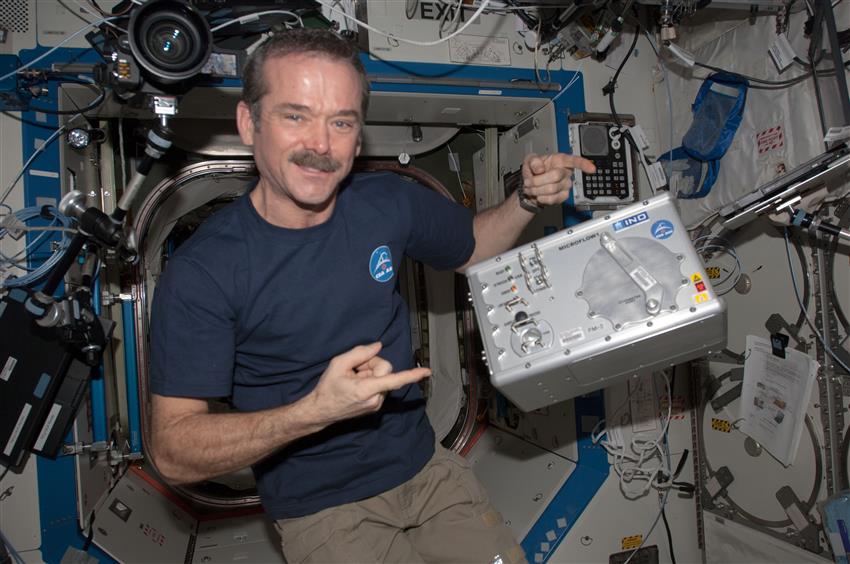Microflow: Bringing Earth's lab technology to space
Microflow was a portable Canadian technology that analyzed cells and hormones in blood or other biological samples. The device was the first of its kind to be tested aboard the International Space Station (ISS).
Background
Although astronauts receive extensive training before they are sent to the ISS, performing blood analysis can be tricky in space.
Microflow used fibre optic technology to take a closer look at cells and molecules in small samples of biological liquid. Information gathered by this type of on-board device could help scientists and doctors on the ground respond to astronauts' needs throughout their flights.
Detectors are positioned at the point where the stream of cells and molecules meets Microflow's laser. These detectors can analyze the physical and chemical properties of cells or molecules in a sample within minutes.
Chris Hadfield introduces Microflow, a Canadian technology that can be used to analyze blood samples anywhere, in just a few minutes. (Credits: Canadian Space Agency [CSA], NASA)
Objectives
By shrinking existing lab-grade analysis technology, Microflow could:
- be used in the ISS environment, where storage space is limited
- extend the possibilities of remote medicine
Impacts on Earth
The technology behind Microflow could be used to perform rapid, real-time testing and analysis anywhere in the country, including areas with limited medical equipment, such as remote communities or those affected by natural disasters.
This type of compact, easy-to-use testing technology could:
- reduce health care costs and give more Canadians access to hospital-level care
- reduce travel for medical testing by allowing people to undergo testing in their own communities
- allow food processing plants to carry out their own inspections and on-site quality control
How it worked
- A sample of blood or other biological liquid was loaded into the device.
- Microflow used fibre-optics based tubes to align cells and molecules for analysis.
- Using its laser, Microflow scanned the cells one by one and gathered the results.
- The device saved the collected data to a USB drive for later analysis.
Most tools on Earth that perform the same functions as Microflow are only used in laboratory settings. They can weigh hundreds of kilograms and take up as much space as three laser printers.
Microflow weighs only 10 kg and is about the size of a microwave. Its small size and light weight make it ideally suited for use in space because:
- it is more affordable to launch lighter objects into space
- small items are easier to stow aboard spacecraft like the ISS
Timeline
The technology was tested during Expedition 34, during Chris Hadfield's five-month stay aboard the Station.
Research team
Principal investigators
- Dr. Ozzy Mermut, Program Manager, National Optics Institute
- Dr. Luchino Cohen, CSA

